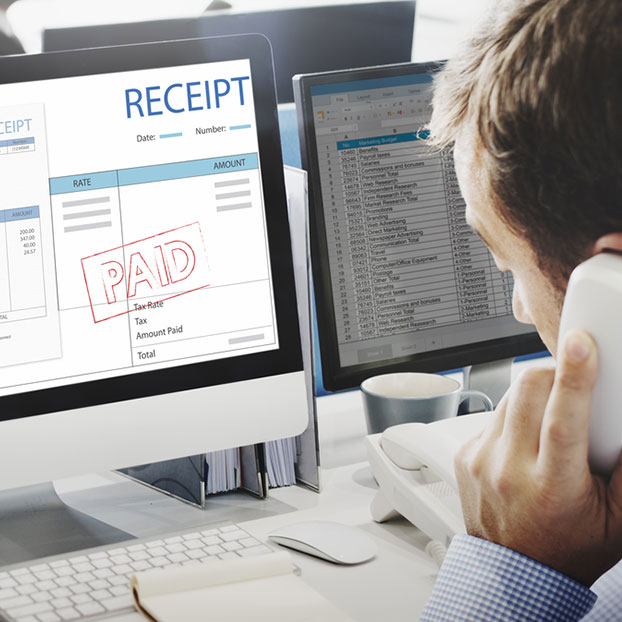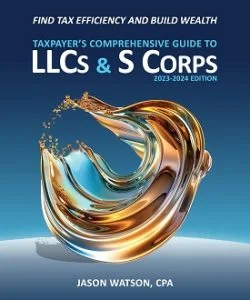
Business Advisory Services
Everything you need to help you launch your new business entity from business entity selection to multiple-entity business structures.
Hey - Our site just had a makeover and we are sorting through the hiccups!
Hey - Our site just had a makeover and we are sorting through the hiccups!

Everything you need to help you launch your new business entity from business entity selection to multiple-entity business structures.

Designed for rental property owners where WCG CPAs & Advisors supports you as your real estate CPA.

Everything you need from tax return preparation for your small business to your rental to your corporation is here.

WCG’s primary objective is to help you to feel comfortable about engaging with us
Table Of Contents
 By Jason Watson, CPA
By Jason Watson, CPA
Posted Sunday, December 29, 2024
With an S corporation or partnership you need sufficient shareholder / partnership basis in your business to deduct losses. For example, if you invested $10,000 into your business but the business lost $30,000, as an S Corp shareholder you can only deduct losses up to the amount of your shareholder basis (in this example, $10,000).
Think of Google. You invested $10,000 into Google stock and they go out of business, you only lose $10,000. Remember that with an S corporation you wear two hats- one as an employee, and one as an investor (shareholder).
How does a loss in a small S corporation happen? A lot of small businesses are cash based and don’t have a lot of equipment (dentists are a common exception). However, for the sake of argument we will assume you bought a piece of equipment for $100,000 and borrowed $100,000 to pay for it. The equipment also qualified for Section 179 expensing deduction allowing you to deduct (or attempt to deduct) the full amount against business income. Great! The benevolent IRS king is alive and well.
Let’s assume that the business income prior to depreciation was $60,000 (and Section 179 expensing was $100,000). The S corporation tax return would still show a $60,000 net business income amount, but your K-1 would show a $70,000 amount for Section 179 deduction. Why $70,000? You had $10,000 in basis (using the example above) plus the $60,000 net business income. 10k + 60k = 70k, even in Canada. Sorry Canada… just too easy to pick on.
You would be able to deduct $70,000 as a loss. The $30,000 remainder of the Section 179 deduction that was not taken or used would be carried forward to future years. Yuck! Sorry, the once-benevolent IRS king is now asking you to be patient and wait.
Here is a table to demonstrate the depreciation conundrum more clearly. We love tables.
| Taxable Income Prior to Section 179 | 60,000 |
| Section 179 Expensing | 100,000 |
| Beginning Shareholder Basis | 10,000 |
| Net Biz Income (profit) on K-1, Box 1 | 60,000 |
| Section 179 Expensing on K-1, Box 11 | 70,000 |
| Loss Taken on 1040 Tax Return | -70,000 |
| Section 179 Carryover, Form 4562 | 30,000 |
Here is another example, that is just slightly different and shows a small difference between Section 179 and bonus depreciation. Similar example to above, but you used bonus depreciation.
| Starting Shareholder Basis | 10,000 |
| Net Income Before Depreciation | 60,000 |
| Bonus Depreciation (80%, 2023) | 80,000 |
| Net Income (loss) on K-1, Box 1 | -20,000 |
| Available Cash in Business | 60,000 |
| Allowed Losses | -10,000 |
| Ending Shareholder Basis | 0 |
| Disallowed Losses Carryover, Form 8582 | 10,000 |
Bonus depreciation is 40% for the 2025 tax year barring changes in tax legislation. The table above uses 80% bonus depreciation as an illustration.
What we are showing here are two things- first, your losses created by the bonus depreciation will be limited because of your shareholder basis. You started with $10,000 but didn’t have any net business income (profits). Rather, you had a $20,000 loss. $10,000 of this $20,000 was allowed and the remainder will be carried forward to future years.
The second thing we are showing is how your cash is trapped. You had profits before bonus depreciation of $60,000 and for the sake of argument this also is your ending cash balance in your checking account. This cash is trapped since you cannot distribute it without creating a distribution in excess of basis.
We will expand on this some more in a bit. The big takeaway is that business losses created by depreciation created by a financed equipment purchase can be painfully and unknowingly limited.
Wait! Looks like we talk about shareholder distributions and basis next. Yay!
 This KB article is an excerpt from our 420+ page book (some picture pages, but no scatch and sniff) which is available in paperback from Amazon, as an eBook for Kindle and as a PDF from ClickBank. We used to publish with iTunes and Nook, but keeping up with two different formats was brutal. You can cruise through these KB articles online, click on the fancy buttons below or visit our webpage which provides more information.
This KB article is an excerpt from our 420+ page book (some picture pages, but no scatch and sniff) which is available in paperback from Amazon, as an eBook for Kindle and as a PDF from ClickBank. We used to publish with iTunes and Nook, but keeping up with two different formats was brutal. You can cruise through these KB articles online, click on the fancy buttons below or visit our webpage which provides more information.
 |
 |
 |
| $49.95 | $39.95 | $29.95 |
Please use the form below to tell us a little about yourself, and what you have going on with your small business or 1099 contractor gig. WCG CPAs & Advisors are small business CPAs, tax professionals and consultants, and we look forward to talking to you!
The tax advisors, business consultants and rental property experts at WCG CPAs & Advisors are not salespeople; we are not putting lipstick on a pig expecting you to love it. Our job remains being professionally detached, giving you information and letting you decide within our ethical guidelines and your risk profiles.
We see far too many crazy schemes and half-baked ideas from attorneys and wealth managers. In some cases, they are good ideas. In most cases, all the entities, layering and mixed ownership is only the illusion of precision. As Chris Rock says, just because you can drive your car with your feet doesn’t make it a good idea. In other words, let’s not automatically convert “you can” into “you must.”
Let’s chat so you can be smart about it.
We typically schedule a 20-minute complimentary quick chat with one of our Partners or our amazing Senior Tax Professionals to determine if we are a good fit for each other, and how an engagement with our team looks. Tax returns only? Business advisory? Tax strategy and planning? Rental property support?

Taxes can be tricky. Chat with a WCG human now and get questions answered.

Everything you need to help you launch your new business entity from business entity selection to multiple-entity business structures.

Designed for rental property owners where WCG CPAs & Advisors supports you as your real estate CPA.

Everything you need from tax return preparation for your small business to your rental to your corporation is here.

WCG’s primary objective is to help you to feel comfortable about engaging with us
